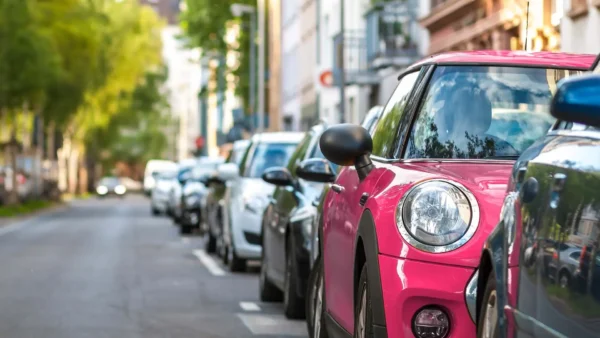If you buy a new car today, it’s likely to have a number of automated safety features that, say, your old 2008 car didn’t have. Yes, that 2008 probably had anti-lock brakes, adjustable seatbelts and front airbags, but that’s likely it, unless it was a luxury model. Today, more and more models come with a long list of safety features, as follows:
- Side curtain airbags
- Backup camera
- Traction control/Electronic stability control, to help you keep control of the car and prevent rollovers
- Adaptive cruise control, which automatically speeds you up or slows you down to maintain a steady distance from the car in front of you
- Warnings if you’re about to hit something or someone, if you’re leaving your lane, if someone is in your blind spot, or if other vehicles are approaching from the side while you’re backing up
- Brake assist/Automatic emergency braking
- Lane assist (automatically steering you back into your lane)
- Active head restraints, which protect your neck by moving up and forward if you get rear-ended
- Onboard navigation and communication systems that automatically call 911 for you if you can’t
- Some newer models even have a feature that locks the doors if someone is approaching from behind, so you don’t open the door into them.
If you watch an ad for a vehicle that has these advanced safety features, the sales pitch is that they make the vehicle safer, and in turn it keeps you and your family safer. On its own, this is a great selling point, and if you read between the lines and understand how insurance is priced, a safer car should be cheaper to insure. Although this is true for certain makes and models, overall, the proliferation of advanced safety features hasn’t led to a significant reduction in claims…or premiums.
Advanced technology is expensive to fix
Two things are standing in the way of reduced premiums: The first is that all the technology now going into cars is making them much more expensive to repair when they do get into a scrape with another vehicle. There was a time when a fender-bender would cost you less than $200 to fix. The body shop would remove the metal bumper, hammer out the dent, and you were back on the road. Even with plastic bumper covers becoming the norm in the 1980s, the plastic cover would have to be replaced after even the smallest collision, but that part remained inexpensive.
Today, bumpers are essentially the epicentre of your vehicle’s safety technology. Most of the cameras and sensors that are needed to warn you of impending collisions or apply the brakes automatically are built right into the front and rear bumpers. The front bumper for the 2010 Jeep Grand Cherokee, for example, was made up of 19 different parts. By 2015, that grew to 42. Those 23 extra parts cost an additional $1,300 if they need to be replaced.
There’s also additional labour involved in putting Humpty Dumpty together again, including recalibrating all the sensors with the on-board computer so that your safety features work as designed. All told, what this means is that the average cost of repairing a vehicle after a crash has gone up dramatically.
Are driver assist features making us lousy drivers?
Even if cars are more expensive to fix, you would think that the proliferation of advanced safety features would drive the frequency of accidents way down, particularly serious accidents causing injury and death. As of 2018, there was no clear trend toward fewer accidents, and while vehicle repair costs are going up (as noted above), injury claims have remained steady. There are a number of possible explanations, and one that is quite popular is that the positive impact of vehicle safety features is being offset by a dramatic increase in distracted driving.
The other explanation is that perhaps all that advertising is teaching us that we no longer need to pay attention to the road, because our car is doing that for us. We’ve all seen the commercial where a driver has their head turned to tend to their children in the back seat, and the car automatically brakes to prevent her from hitting another child that’s crossing the street. A heart-warming moment, but this kind of advertising may be giving drivers the impression that they can relax behind the wheel. This may be at least partly to blame for the increase in distracted driving.
As more of this safety technology becomes standard and older cars leave our roads, we may yet see a decrease in accidents, road deaths, and indeed, auto insurance premiums as a result. But so far, the net impact of these advances on insurance rates has been to drive them up, not down.
Looking for car insurance?
Speak with a Mitch Insurance broker today to get a quote on Ontario auto insurance. Learn more >
Call now
1-800-731-2228







